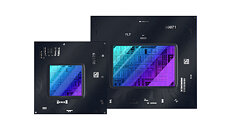
Gigabyte Launches its Latest AORUS Graphics Cards Based on NVIDIA GeForce RTX 40 Series
GIGABYTE, the world's leading computer brand, today announced new GeForce RTX 40 series graphics cards. The long-awaited NVIDIA GeForce RTX 40 series graphics cards have finally arrived. To fully unleash the beastly performance of these next-gen powerhouses, GIGABYTE rolled out its top-of-the-line AORUS graphics cards with amped-up designs and improved features, giving hardcore gamers and content creators more of everything.
Powered by the new ultra-efficient NVIDIA Ada Lovelace architecture, the 3rd generation of RTX, GeForce RTX 40 Series graphics cards are beyond fast, giving gamers and creators a quantum leap in performance, neural rendering, and many more leading platform capabilities. This massive advancement in GPU technology is the gateway to the most immersive gaming experiences, incredible AI features and the fastest content creation workflows. These GPUs push state-of-the-art graphics into the future.
Powered by the new ultra-efficient NVIDIA Ada Lovelace architecture, the 3rd generation of RTX, GeForce RTX 40 Series graphics cards are beyond fast, giving gamers and creators a quantum leap in performance, neural rendering, and many more leading platform capabilities. This massive advancement in GPU technology is the gateway to the most immersive gaming experiences, incredible AI features and the fastest content creation workflows. These GPUs push state-of-the-art graphics into the future.


































































